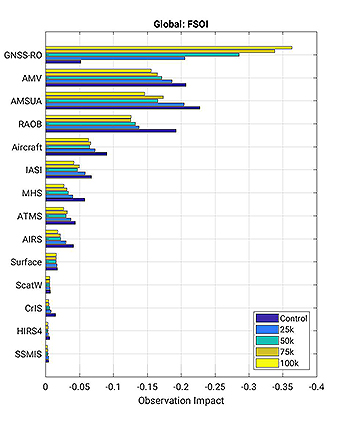Observing System Simulation Experiments (OSSEs)

NASA satellite observations are used to improve our knowledge of the current state of the atmosphere and ocean, that acts as a starting point for forecasts of future states. GMAO provides modeling support for NASA missions by examining the impacts of satellite and other observations on the analysis and prediction of weather and climate.
We can estimate the impacts of proposed designs of new satellites using a type of study called an Observing System Simulation Experiment (OSSE). An OSSE uses computer models to test different designs of the new satellite systems before their instruments are actually built or deployed, and to compare the performance of the new satellites against current observing platforms. The results can help to guide the design of new instruments and to determine if a new satellite platform will be cost-effective.
An OSSE system has been developed at the GMAO that uses the Gridpoint Statistical Interpolation (GSI) data assimilation and GEOS-5 forecast model. The GMAO OSSE has been used to support NASA teams in the development of new instruments, and also for investigation of the performance of the data assimilation system used for operational weather forecasts. GMAO research is also targeted at developing OSSE concepts for other data types, including proposed measurements to examine air pollution and climate from space.

